In the Community Action Gateway (CACT), 15 first-year students learn about social change in the city and engage in research and creative projects with community partners. This spring, the 2021-22 cohort produced outstanding work in partnership with Kamora’s Cultural Corner, the Southside Institutions Neighborhood Alliance (SINA), the Center for Leadership & Justice, and Desiree Primus. Students and partners took on the added challenge of working together in hybrid formats during a pandemic – meeting regularly over Zoom, attending community events and going off campus for interviews, building room for flexibility in project plans, and editing communications products using collaborative digital platforms.
We started our first class with a video and discussion on adrienne maree brown’s Emergent Strategy: Shaping Change, Changing Worlds which helped guide our work and projects through the semester. Each week we covered a different topic to support the semester-long projects: reviewing the basics of community-based research, developing good interview skills and techniques, analyzing and visualizing data, creating work plans and managing partnerships, building trust with each other and community, making public presentations and communicating about social change issues, and reflecting on organizing, movements and self-care within this context. Through these projects, students also built on their knowledge of Hartford’s history and present assets. One of the most important themes that came up in our class discussions was the importance of doing meaningful work with partners and debunking harmful stereotypes about the city and its residents.
This group can tell you that at least once per week I’ve said, “take care of yourselves as people in addition to yourselves as students,” and they have done just that and more as they’ve poured their hearts and energy into these important projects. We are so thankful to our community partners Kamora Herrington, Luis Delgado, Juan Fonseca Tapia, Desiree Primus, and Logan Singerman; project contributors Steve Thornton, Lew Brown, Ellis Echevarria, Bruce Rubenstein, Yessica Amparo, Carmen Fuentes, Maria Negron, Pastor Roberto Calcano, Graciela Rivera, Jack Dougherty, Ilya Ilyankou ‘18 and others; guest evaluator Elena Rosario; CACT mentors Renita Washington ’22, Abby Nick ’24 and Essence Smith ’24, CACT 101 instructor and CHER Director Abby Williamson, Trinity staff members Dave Tatem, Mary Mahoney, Amy Harrell, Ilda Ramos and Elliot Levesque; Ron Miller at Heritage Printers; and everyone who has supported the cohort this year. Please take a look at the students’ projects and reflections below.
Data for Housing Justice with the Center for Leadership & Justice
Anna Grant-Bolton ‘25, Jack White ‘25, James Maciel Andrews ‘25, and Myri Ayala ‘25 with community partner Juan Fonseca Tapia
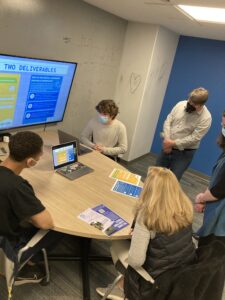
The Center for Leadership & Justice is engaged in broad-based community and multi-faith organizing with the goal of building enough relational power to bring about systemic justice in Greater Hartford. CLJ organizers support leaders in identifying, researching, and taking action on issues that impact them. In 2017 the CLJ launched the #NoMoreSlumlords campaign where six residents in Clay Arsenal Renaissance apartments organized to drive out a millionaire absentee slumlord from Hartford. The same year, the CLJ successfully advocated for a new Hartford Housing Code. As the CLJ follows the implementation of the new code, Juan Fonseca asked this CACT group to analyze and visualize the City of Hartford’s public data set on Housing Code Cases, attend meetings with tenant leaders to learn more about their experiences, explore FOIA policy issues, and design communications products on how to file a housing code case and a summary of the rental licensing program.
This group collaborated with Professor Jack Dougherty and Ilya Ilyankou ‘18 to launch the Housing Code Complaints Heatmap and summarized their findings and presented their visualizations in a WordPress blog post “Data as a Tool for Housing Justice.”
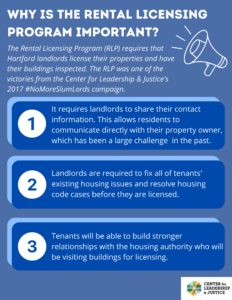
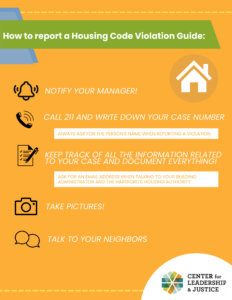
Carrie Saxon Perry Digital Archive – SAND Elementary
Aisha Carothers ’25, Olivia Silvey ’25, and Amna Zeb ’25 with community partner Desiree Primus
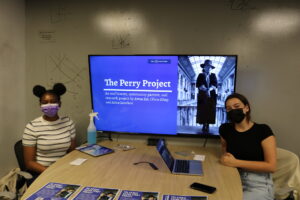
In 1987, Carrie Saxon Perry was the first African-American woman elected mayor of Hartford–a first for any New England city. She was an outspoken barrier-breaker who brought people together and advocated fiercely for city residents. After her service as Hartford Mayor, Perry became active in the Greater Hartford branch of the N.A.A.C.P. and served as its president from 2004 to 2008.
I’m hoping that this will generate discussion and awareness, and it will empower students [at Sand Elementary] because this is her neighborhood. She grew up in Bellevue Square housing projects, which is here. And there was a strong sense of community. So the students in this neighborhood, they can look up and say, ‘here’s someone that looks like me from this neighborhood who was very powerful, who helped her community.
This project extended Aisha, Olivia and Amna’s fall semester video project to a digital archiving project focused on Carrie Saxon Perry’s time as mayor and her influence. For research, Aisha, Amna and Olivia kept an archival journal aligned with their research questions as they scanned the Hartford History Center archives, the Hartford Courant and the CT Digital Archives. They also created primary sources by conducting oral history interviews with people close to Perry during her time as Mayor, and they secured and digitized a copy of her inaugural address.
With the help of Mary Mahoney and Amy Harrell, the group then preserved all the material, including full length interviews, in the Trinity College Digital Repository and created a public facing Historypin collection which allows members of the public to learn about Carrie Saxon Perry and contribute their own material and memories to the collection.
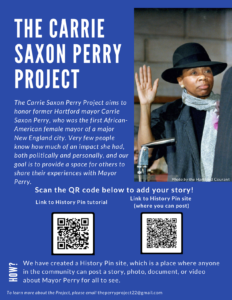
As a component of the project, Aisha, Amna and Olivia presented their preliminary findings to Desiree Primus’ 5th grade class at SAND Elementary.
This semester was when we were all able to take our projects into our own hands and challenge ourselves because we wanted to challenge ourselves. We could be community action nerds without any judgment — we could talk about the digital repository or Bellevue Square or housing codes and be met with smiles, encouragement, and genuine interest… CACT was where I could take a breath if I was living in a time when I felt like I was drowning.
Cultural Humility and Afro-Centric Education – Kamora’s Cultural Corner
Mina Arenella ’25, Ava Caudle ’25, Reese San Diego ’25, and Shayla Whitaker ’25 with community partner Kamora Herrington
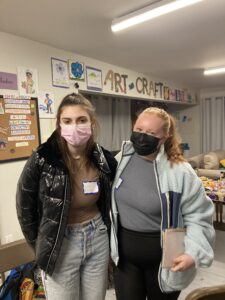
Kamora’s Cultural Corner provides both a metaphoric and physical space to learn to use the gifts and privileges of our unique and shared identities. Approaching cultural humility through a Black Queer and Afrocentric perspective, the KCC creates and navigates Brave Spaces with the intention of building and supporting organic community connections through consultations, trainings, workshops, community conversations and community partnerships.
Kamora asked this group for help with 1) a literature review on the social emotional outcomes for students exposed to an Afro-centric education, accompanied by a written and visual executive summary and 2) written field observations and infographic visual summaries of KCC Cultural Humility Sessions which were held virtually or in-person at Community First School. As an added product, the group also created a double sided color postcard explaining the connections between Afro-centric principles and social emotional principles which Kamora used in workshop sessions at the BOOST Best Out of School Time conference this spring.
I think one of my biggest takeaways is that research isn’t scary. Coming to college, I had this idea of research in my head that it takes place in a lab with a lab coat and goggles, and it was just scary and completely out of my wheelhouse. And when I came to CACT, before I even realized it, I was doing research my first semester here. Conducting research in CACT has really reframed the way I think about research and also made me feel more capable of it. Of course, research in a lab is valuable, but if that kind of idea of research scares you, don’t let it keep you away from community action.
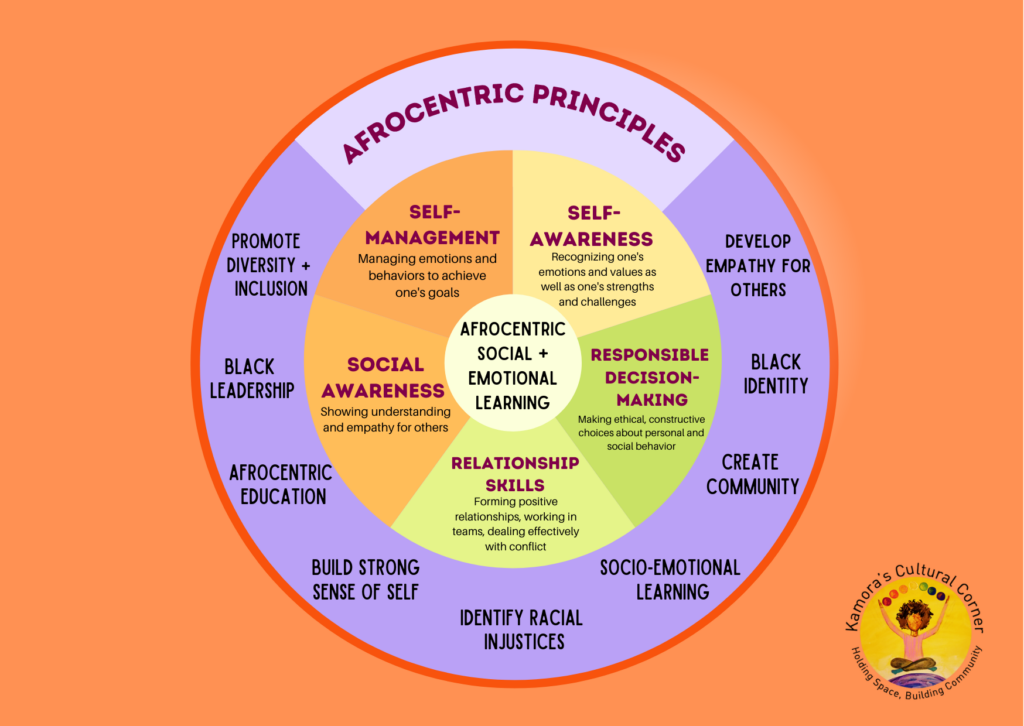
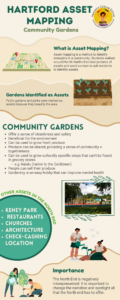
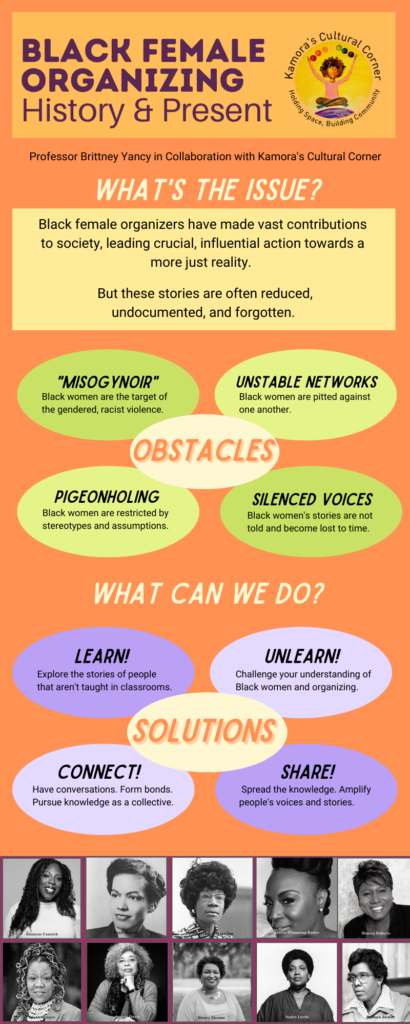
The Frog Hollow People’s Oral History Archive – Southside Institutions Neighborhood Alliance (SINA)
Jules Bourbeau ’25, Jenissa Cortes ’25, and Jeremias Vazquez ’25 with community partner Logan Singerman
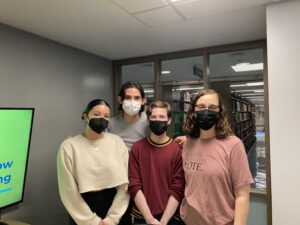
In fall 2021, Trinity’s Liberal Arts Action Lab students worked with community partners at the Southside Institutions Neighborhood Alliance (SINA) on the Frog Hollow Storytelling project. In collaboration with residents and leaders of the Frog Hollow Community, the group assembled a multimedia archive documenting the neighborhood’s lived history, experiences, and public art. This archive contains content for four “Tour Lines”: Community Spaces, Public Art, Frog Hollow Heroes, and Voices of Frog Hollow.
For research, SINA asked for help gathering additional content for each of the tour lines. To identify key content, this group collected a series of oral history interviews in Spanish, an archival scan of the existing Frog Hollow People’s Oral History archive, the Hispanic Hartford archive and other repositories. For a communications component, the group put together mock up digital walking tours using two different platforms. You can view the mock ups at the following links.
Public Art in Frog Hollow – Clio
Frog Hollow Community Spaces – Clio
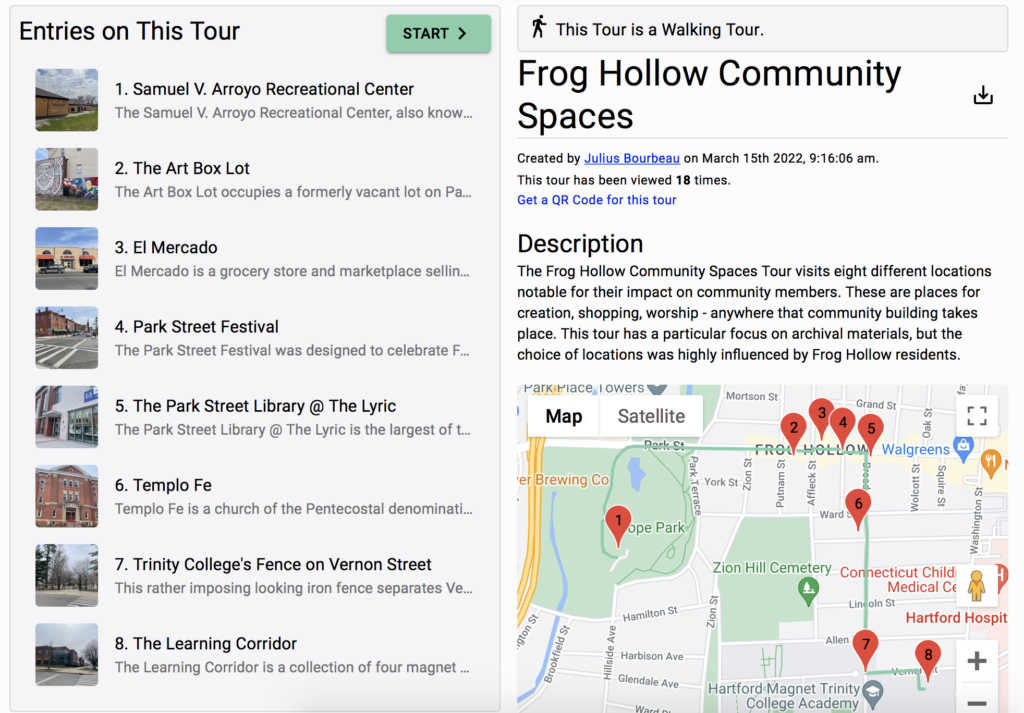
I’ve learned in class how my identity plays into community action. We learned first semester about the idea of double consciousness … I feel like in semester two, we really, really learned about our identities and how it fits into this world.. and how being a woman of color, being associated with Trinity as a higher education institution, and doing community work … it comes with a level of privilege and power, essentially, and navigating that world comes with allowing a lot of the community to be the experts rather than us being the experts.

Before we dove into actually working full time on the [Frog Hollow Storytelling] project, we had to prepare. One of the assigned “readings” that stuck with me most was not actually a reading, but a video essay: “Rhetorical History 2.0: Toward a Digital Transgender Archive” by K.J. Rawson … This source shaped the way I think about archives. Rawson points out that an archive is “a mechanism of power.” That is, by choosing what to include and leave out, archivists are projecting a statement about what sources are worth learning about and preserving.
This summer, SINA will collaborate with two students in the Public Humanities Collaborative to assemble and share the tour.
In the Community Action Gateway, first-year students learn how to create community change with community activists, neighborhood organizers, government leaders, non-profit directors, journalists, and social entrepreneurs in Hartford. If you have questions about the Gateway, contact Director of Community Learning [email protected]
